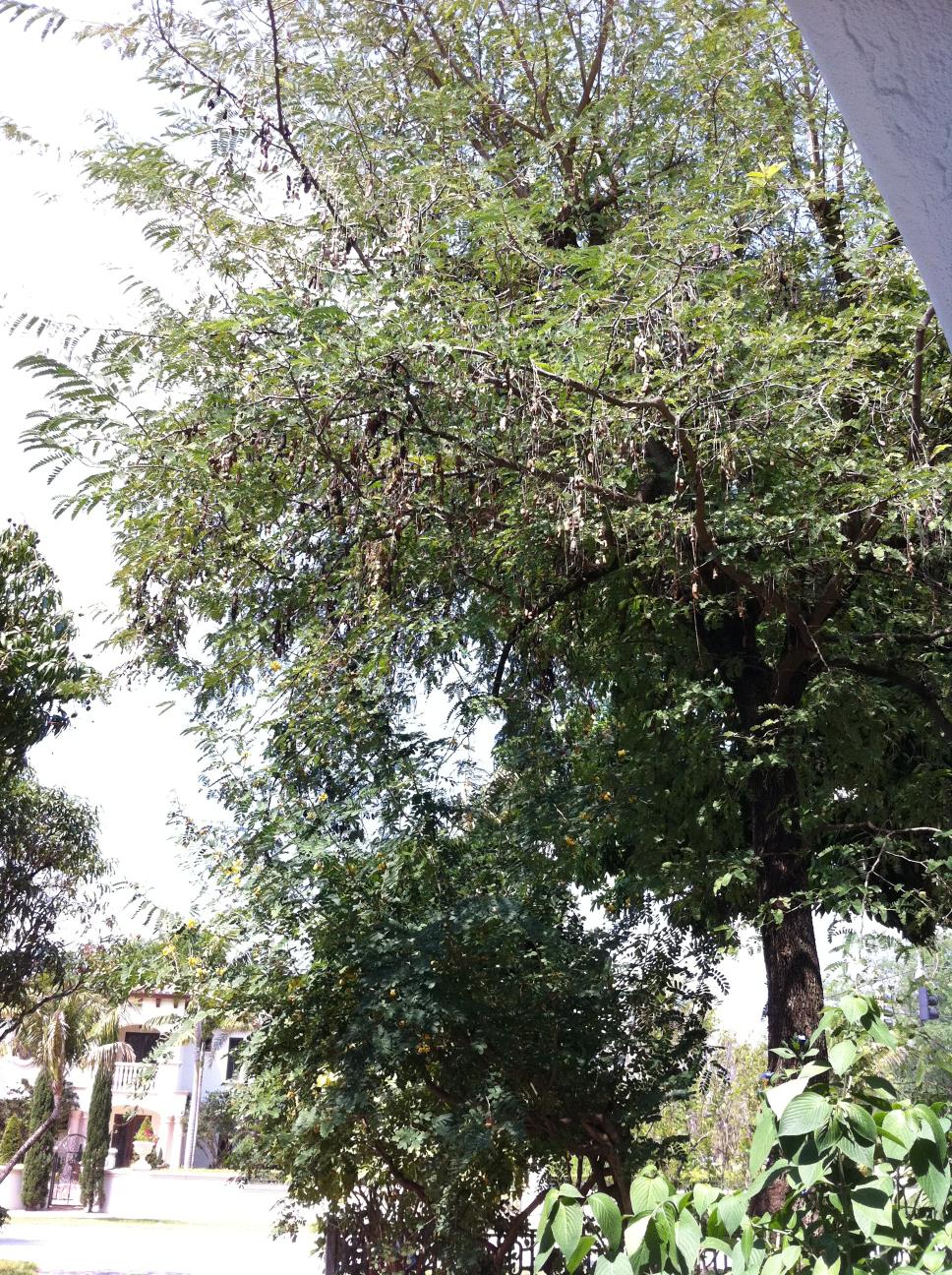Longing For Fish Soup
Tamarind (Tamarindus indica) is a tree in the family Fabaceae. The genus Tamarindus is monotypic meaning it is a sole species.
After flowering, the fruit is an indehiscent (meaning not splitting open at maturity) legume, sometimes called a pod, it has a fleshy, juicy, acidulous pulp and matures when the flesh is colored brown. The tamarinds of Asia have longer pods containing 6–12 seeds, whereas African and West Indian varieties have short pods containing 1–6 seeds. The seeds are somewhat flattened, and glossy dark brown or black. That's a good hint for you. If you zoom in on the photo and count the pods, you can tell where this tree comes from.
The tamarind is best described as sweet and sour in taste, and is high in acid, sugar, vitamin B and, interestingly for a fruit, calcium.
Globally, it is most numerous in South Asia, where it is widely distributed and has a long history of human cultivation. Many South Asian regional languages have their own unique name for the tamarind fruit. It is called the tetul in Bangla. In Sanskrit, it is called tintidi. In Oriya, it is called tentuli, in Hindi it is called imli; in Gujarati the amli, and Marathi and Konkani the chinch; in Kannada it is called hunase Telugu chintachettu (tree) and chintapandu (fruit extract) and in Malayalam it is called vaalanpuli. In Pakistan in Urdu, it is known as imli. In Sri Lanka in Sinhala, it is called siyambala; and northern areas in Tamil also as the puli. In Indonesia, tamarind is known as the asam, translates as Javanese sour fruit. In Malaysia, it is also called "asam Jawa". In the Philippines, tamarind is referred to as sampaloc. The Vietnamese name is me(pronounced "may.") In Taiwan, it is called loan-tz. In Myanmar, it is called magee-bin (tree) and magee-thee (fruit). The tamarind is the provincial tree of the Phetchabun province of Thailand where it is called ma-kham. In Malagasy it is called voamadilo and kily. In Colombia, Dominican Republic, Mexico, Puerto Rico and Venezuela it is called tamarindo. In the Caribbean, tamarind is sometimes called tamon. In Ghana, it is called 'dawadawa'. Have you had enough of strange names? In Vietnam, the tamarind is used heavily to make sugar saturated candies for all occasion. The sour variety is excellent for use in making fish soup... so yummy that makes me salivate just thinking about it.
Here it is, in Miami. This tree has lots of fruit ready to be picked. I tasted a few and they are OK to eat, not too sour, not too sweet. If I can find a fresh fish, I may come here to pick a handful of these fruits to cook up a delicious fish soup. Yeah... Dream on...



No comments:
Post a Comment